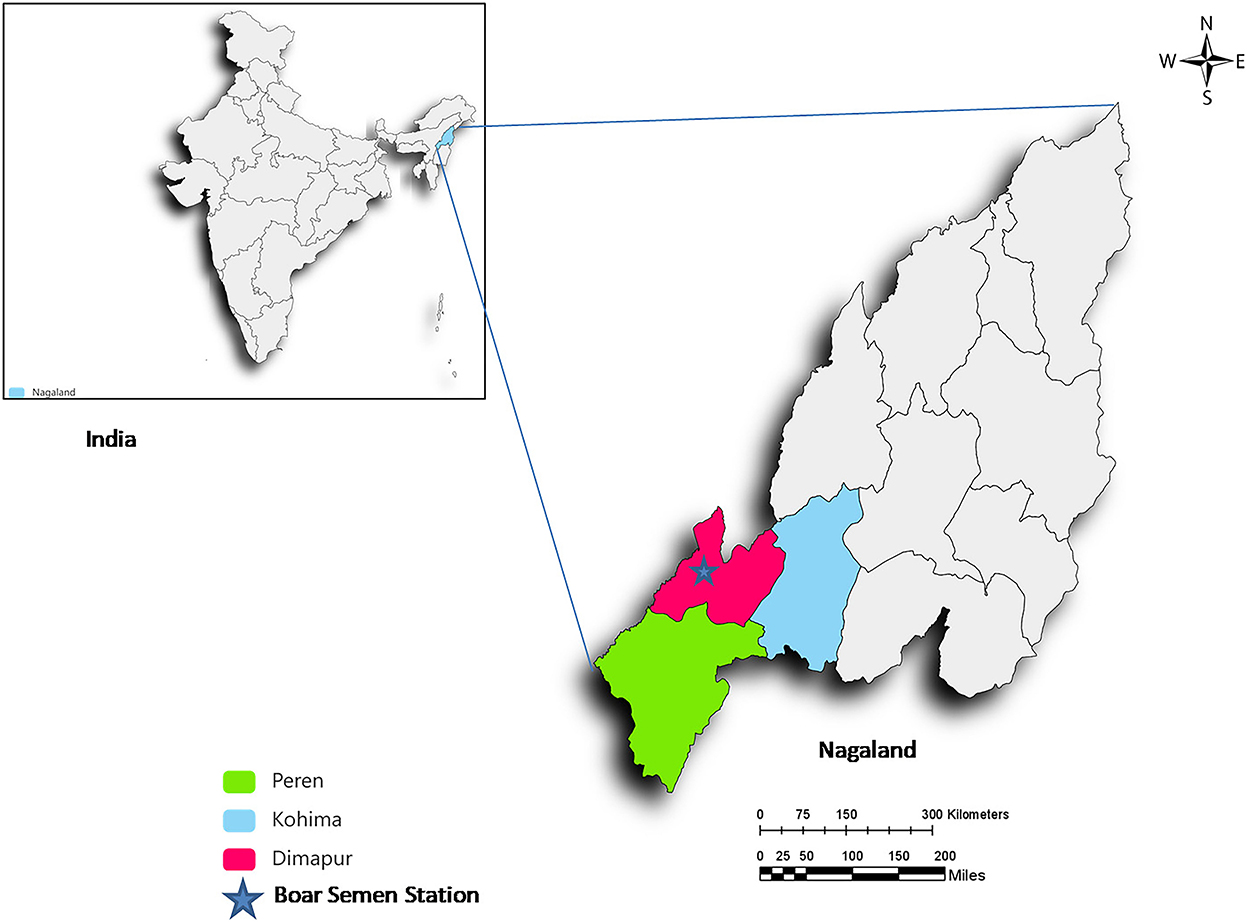- 1Theriogenology Laboratory, Indian Council of Agricultural Research (ICAR) Research Complex for North East Hilly Region, Nagaland Centre, Medziphema, India
- 2Department of Agronomy, School of Agricultural Sciences and Rural Development, Nagaland University, Medziphema, India
- 3Department of Animal Genetics and Breeding, College of Veterinary Science, Central Agricultural University, Aizawl, India
- 4Indian Council of Agricultural Research (ICAR) Research Complex for North East Hilly Region, Shillong, India
- 5Department of Agronomy, Indian Council of Agricultural Research (ICAR)-Indian Agricultural Research Institute, New Delhi, India
In fragile ecosystems, smallholder pig production systems provide food and nutritional security to resource-poor communities. Pigs are the main livestock raised by indigenous communities in the Himalayan region of India, but their productivity is low for several reasons. The present study aimed to study the pig herd size and to evaluate the impact of artificial insemination (AI) on profitability and sustainability in the small-holder pig production system. A total of 612 AIs were carried out in 483 sows in the farmer's field along with 114 sows that underwent natural breeding. A comparison was made between the reproductive performance of sows following AI and natural breeding. The profitability and economics of AI and natural breeding were also compared. The mean pig population varied from 4.75 to 6.42 in the study region. The farrowing rate, total born piglets (TBPs), and live born piglets (LBPs) were significantly higher (P < 0.001) in artificially inseminated sows compared to naturally bred sows (9.37 vs. 6.28; 8.93 vs. 5.45). Farrowing rate (P = 0.005), TBP, and LBP were significantly (P < 0.001) higher in sows inseminated by female inseminator as compared to male inseminator (81.26 vs. 71.42%; 9.65 vs. 8.80; 9.21 vs. 8.38). The insemination by uneducated farmers resulted in significantly (P = 0.002) lower farrowing rate, TBP (P < 0.001), LBP (P < 0.001), and AI per farrowing (P = 0.042). The farmers who did AI for the third time and more than three times recorded significantly (P < 0.001) higher farrowing rates, TBP, and LBP. The farrowing rate was significantly (P < 0.001) less in sows that were located more than 30 km away from the semen center (66.66 vs. 82.90%). The net return per sow was significantly higher (P < 0.001) in artificially inseminated sows (US$464.8 vs. US$248.11). AI resulted in an 87.33% increase in net returns per farrowing as compared to natural breeding. In conclusion, AI in smallholder pig production systems has the potential to sustainably improve the profitability as well as the food and nutritional security of resource-poor farmers.
Introduction
Smallholder pig production system is being practiced by marginal or poor communities, particularly in Africa and Southeast Asia (Molotsi et al., 2021; Singh et al., 2021a). In this system, pigs are reared for households or local consumption only to sustain their livelihood. Besides, the pig plays a crucial role in religious and social ceremonies. Even though the production system is traditional with few inputs and low productivity, it still provides economical, nutritional, and food security (Singh and Mollier, 2016; Singh et al., 2019). In comparison with the intensive pig production system, the smallholder pig production system uses fewer resources, produces less waste, and is, therefore, more environmentally sustainable. The relatively small investment cost and the potential for value addition make this system a good alternative for small farmers (Park et al., 2017).
In India, most of the pig population (46%) is present in the seven states of the Eastern Himalayan region, where most pigs are raised in smallholder systems, in which farmers keep two to five pigs in their backyards mainly for fattening purposes (Singh et al., 2019, 2020a; Sharma et al., 2020). In this system, reproductive efficiency and productivity are generally low which can mainly be attributed to inbreeding (Kadirvel et al., 2013; Sharma et al., 2020; Singh et al., 2020a). For this reason, a breeding boar is used for 4–5 years for natural breeding (Kadirvel et al., 2013; Sharma et al., 2020). Also, boars used in natural mating may have a low libido score which is often overlooked by farmers. Moreover, genetics, general health condition, and flooring in mating areas are critical parameters that influence the libido of boars and subsequently their fertility (Hodel et al., 2021). In the last two decades, the pig population has seen a negative growth rate in the region (Singh et al., 2021b). Furthermore, poor farmers in this region face severe economic hardship due to the occurrence of transboundary diseases. In addition, the demand for pork is increasing due to the growing human population, increasing income, and industrialization. Therefore, urgent interventions are needed to improve pig production in a sustainable way. This can be achieved through the use of improved technology in key areas such as genetics, nutrition, management, cleanliness, and reproduction. Among these areas, artificial insemination (AI) is one of the most effective approaches to improve pig productivity (Celestin et al., 2019; Singh and Mollier, 2020). Throughout the globe, AI in pigs has improved pig fertility and reproductive efficiency with a minimum risk of diseases (Knox, 2016; Singh et al., 2021a). In Europe and North America, more than 90% of pigs are being bred with AI, while in India, less than 1% of pigs are being inseminated artificially (Knox, 2016; Singh and Mollier, 2020). The use of AI to improve smallholder pig production systems in rural areas was suggested earlier (Am-in et al., 2010; Visalvethaya et al., 2011; Kadirvel et al., 2013).
Despite the known benefits of AI, it has not percolated to the smallholder pig production system in the Eastern Himalayan region of India. There are no comprehensive reports available on how AI works in smallholder pig production systems in this region in relation to various factors affecting its performance. Therefore, the objectives of the present study were (i) to compare the reproductive efficiency of natural breeding and AI, (ii) to evaluate various factors affecting the success of AI, and (iii) to compare the profitability of natural breeding and AI in the Eastern Himalayan region.
Materials and methods
Study area
The study site is located in Nagaland (93°20°E and 95°15°E longitude and between 25°6°N and 27°4°N latitude), a state in the Eastern Himalayan region of India (Figure 1). Topographically, the state is 70% hilly regions and 30% plains regions. The climate of the region is subtropical with high humidity during the monsoon season. Annual rainfall varies from 1,500 to 2,000 mm. The temperature humidity index of the region exceeds 90 during the summer and monsoon seasons (Singh et al., 2022). For this study, the farmers were selected from three districts (Dimapur, Kohima, and Peren) of Nagaland. These districts were selected for the study due to the nearby presence of a boar semen station of the ICAR Research Complex for NEH Region, Nagaland Center. Kohima is a hilly district, whereas Dimapur and Peren lie in the plain regions. These districts have the highest pig populations in the state.
Farmers' selection and sample size calculation
To collect the data, farmers from the database of the ICAR Nagaland Center were randomly selected, contacted by telephone, and then visited in the field after 1 month of AI. After AI or natural breeding, sows were observed until farrowing, and data were recorded on farrowing rate and litter size. The sample size was calculated as follows:
Where
For this study, 412 smallholder pig farms were selected and their pig herd size was recorded. Similarly, for AI, data from 612 AIs performed in 483 sows in the farmer's field during 2019 and 2020 were collected. A total of 452 and 160 AIs were performed by the farmers and research associates (veterinarians), respectively, using a Golden Gilt (IMV, France) catheter. Data from 114 naturally bred sows were also collected from the smallholder pig breeders for comparison with AI.
Semen collection and processing
The semen doses used in the present study were collected from boars (Ghungroo × Hampshire) reared at the ICAR Nagaland Centre's Pig Research Farm. Semen from boars was collected using the gloved hand method (Singh and Mollier, 2020). Semen was transported in a thermos flask to the laboratory within 15 min of collection. The semen quality parameters were evaluated in the laboratory. The ejaculates with more than 70% total motility and <20% abnormal spermatozoa were selected for use in the AI program. After examination of the semen (both macroscopically and microscopically), it was diluted in PRIMXcell (IMV, France) extender. The dilution was done in such a way that each insemination dose (80 ml) contained 3 billion motile spermatozoa. The processed liquid boar semen was stored at 17°C in biochemical oxygen demand (BOD) incubator. Semen was transported to the sites of AI in temperature-conditioned thermos boxes on the day of insemination.
Artificial insemination and natural breeding
Artificial insemination in pigs is being promoted in this region through the Do It Yourself model under the Mega Seed Project on Pigs funded by the Indian Council of Agricultural Research. In this model, farmers collect the AI kit (extended liquid boar semen and AI catheter) from the boar semen station at ICAR Nagaland Center and perform AI themselves. Training on AI is regularly provided by the Center to pig breeders, but anyone who wants to inseminate pigs can purchase the kit. Estrus was detected by behavioral signs such as swelling and reddening of the vulva, vulvar discharge, vocalization, in-appetence, boar-seeking behavior, ear popping, and standing for back pressure. The procedure of AI is performed in a neat and clean environment (pig pen) by taking into consideration all the sanitary measures including cleaning the vulva to remove urine and feces and use of a new AI catheter. For AI, the tip of the catheter is lubricated with a non-spermicidal gel and inserted into the vagina for passage into the cervix while rotating anti-clockwise. After locking the catheter in the cervix, the semen pouch is attached to the catheter and the semen is allowed to flow into the cervix using gravity and gentle pressure over a 3- to 4-min period. The catheter is inserted at an angle of 30° to the backbone (Singh and Mollier, 2020). After the complete deposition of the semen, a catheter is gently withdrawn by simultaneously twisting it in a clockwise direction. During insemination, the female pig was stimulated by rubbing the flank and underlying region; however, boar and boar taint spray were not used for simulation. When bred naturally, sows were served by the rental or hired boar. Sows were of second to fifth parity and were Hampshire and Ghungroo crossbred. A grouping of farmers was also done according to experience: first timers (who did AI for the first time), second timers (who did AI for the second time), third timers (who did AI for the third time), and more than three times (who did AI more than three times). Training includes no training, group training (3 days residential), and individual training (1–2 days) on AI for farmers. The farrowing rate was calculated as the proportion of artificially inseminated or naturally bred females that farrowed. In addition, AI per farrowing, total piglets born/litter (TPB), live-born piglets/litter (LBPs), number of weaned piglets (WPs), stillborn piglets (SBPs; piglets that are born dead at farrowing)/litter, and mummies (mummified fetuses are due to autolysis and dehydration, without maceration, and born with the litter)/litter was also recorded. In the households studied, one to two breeding sows were raised in backyard production systems and piglets were sold at the age of 2–3 months.
Comparison of the economics of artificial insemination and natural breeding
For economic analysis, the cost and return of the breeding system only are included as other production costs were similar in both systems. For natural breeding, transportation cost includes transportation of sow to boar farm. For AI, transportation cost includes transportation of the AI kit from the semen station to a pig farm. The cost of natural breeding is the amount charged by the owner of the boar for breeding. For AI, the breeding cost per sow includes the cost of two AI kits (two extended semen pouches and catheters) as supplied by the boar semen station at ICAR Nagaland Center.
Statistical analysis
All statistical analyses were performed using SPSS version 27 (IBM). Data were examined for normality by the Shapiro–Wilk test. The farrowing rate was compared using Pearson's χ2 test. One-way ANOVA was performed to study the effect of different factors on the reproductive performance variables. The differences between means were determined by Duncan's post-hoc test. Quantitative variables were summarized as mean ± standard error of mean (SEM). Pearson's correlation coefficient (r) was computed to see the strength and significance of the relationship among variables (Table 1). Differences were considered statistically significant at a 95% confidence level (P < 0.05).
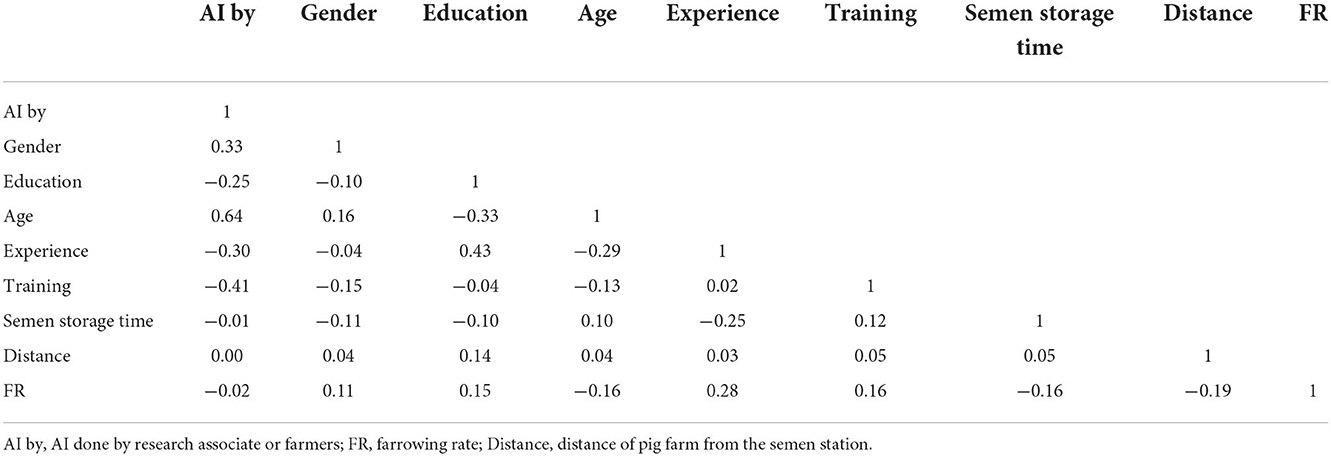
Table 1. Correlation table of different factors affecting the success of artificial insemination in smallholder pig production system.
The monetary expenditure incurred for natural breeding and AI was summed up and expressed as the total cost of production. Gross returns were the summation of total economic gain from natural breeding and AI. The economic expenses and gain have been changed to US dollars (US$) for better understanding and readability. The following economic indices were measured.
Results
Pig population in smallholder pig production system in the studied region
The pig population structure in the studied region is presented in Table 2. In all three districts, the castrated boar population was numerically higher than other categories of pigs. The number of sows was significantly higher (P = 0.040) in Dimapur (1.44) and Kohima (1.40) districts as compared to Peren (1.12) district. The number of castrated boars was significantly higher (P = 0.042) in the Dimapur district (1.89 vs.1.42). Similarly, the number of piglets was significantly higher (P = 0.016) in Dimapur (1.80 vs.1.32).
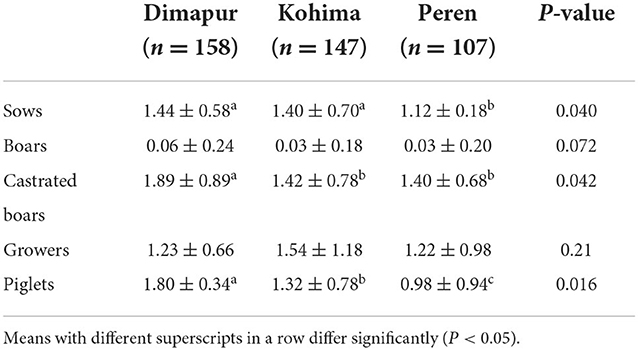
Table 2. Pig population structure in the smallholder pig production system in Indian Himalaya (mean ± SD).
Effects of type of breeding and inseminator on reproductive performance of pigs in smallholder pig production system
The effect of breeding methods and inseminator on the reproductive performance of the sow is presented in Table 3. The farrowing rate was significantly higher (P < 0.001) in artificially inseminated sows (77.78%) compared to naturally bred sows (60.52%) (Figure 2). Similarly, TBP, LBP, and WP were significantly higher (P < 0.001) in artificially inseminated sows (9.37 vs. 6.28; 8.93 vs. 5.45; 8.33 vs. 5.06). Stillborn piglets were higher (P = 0.015) in naturally bred sows (0.75 vs. 0.33). The number of breeding per farrowing was significantly higher (P < 0.035) in naturally bred sows (2 vs. 1.71). No effect of inseminator on farrowing rate, SBP, mummified fetuses, and the number of breeding per farrowing was observed. However, TBP and LBP were significantly higher (P < 0.05) in sows inseminated by research associates (9.77 vs. 9.23; 9.38 vs. 8.77). Weaned piglets (8.93 vs. 8.12) were significantly (P < 0.001) higher in sows inseminated by research associates.

Table 3. Effect of breeding methods and inseminator on reproductive performance of sows in smallholder pig production system.
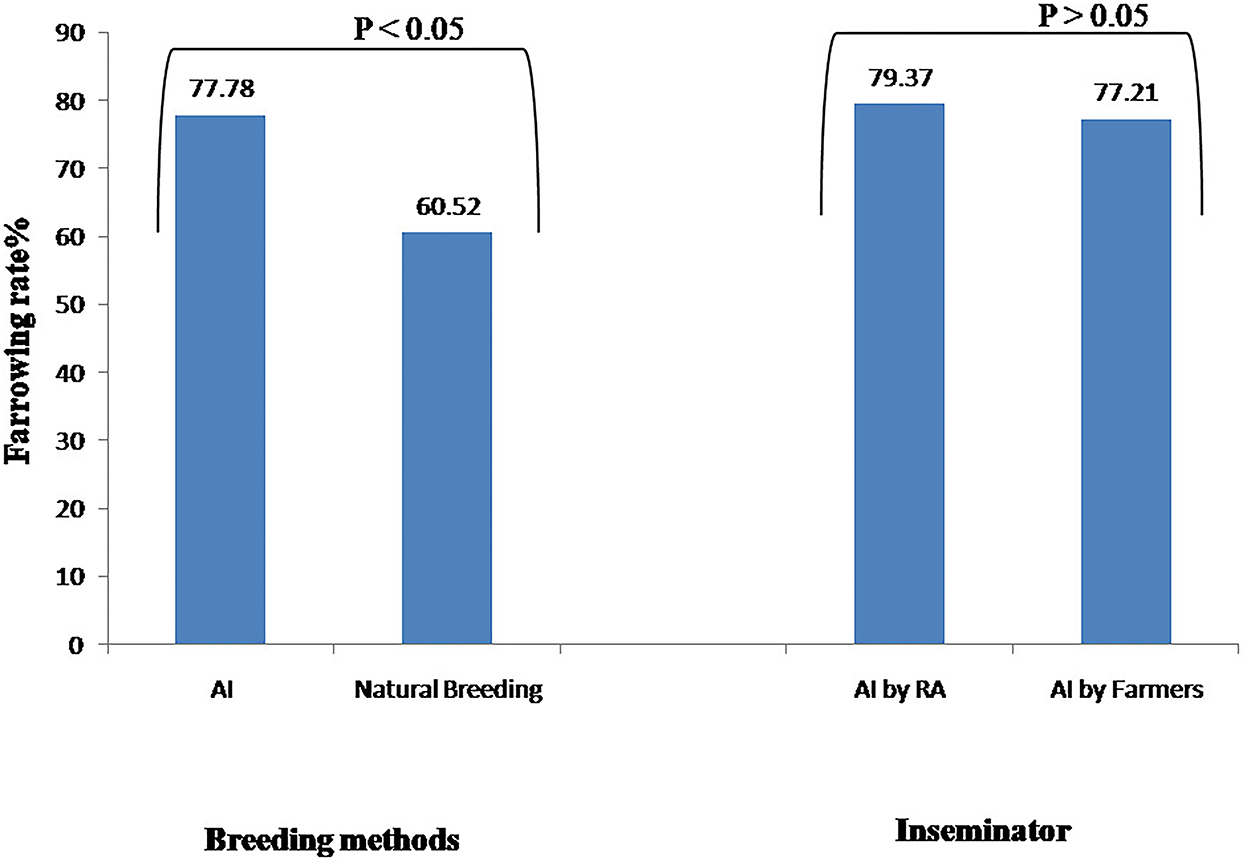
Figure 2. Effect of breeding methods and inseminators on the farrowing rate of pigs in smallholder pig production system.
Effects of gender, age, education, experience, and training of farmers on reproductive performance of pigs in smallholder pig production system
The farrowing rate was significantly (P = 0.005; r = 0.11) higher in sows inseminated by female inseminators (81.26%) compared to male inseminators (71.42%) (Table 4). Similarly, TBP and LBP were significantly (P < 0.001; r = 0.11) higher in sows inseminated by female inseminators (9.65 vs. 8.80; 9.21 vs. 8.38). Farmer's age had a significant effect on reproductive outcome, with younger inseminators (25–40 and 41–50 years) recorded significantly (P < 0.001; r = –0.16) higher farrowing rate (85.10 vs. 55.79%), TBP (9.60 vs. 8.25), and LBP (9.17 vs. 7.90) compared to older inseminator. Uneducated farmers recorded significantly (P = 0.002; r = 0.15) lower farrowing rate (64.15%), TBP (8.32) (P < 0.001), LBP (7.94) (P < 0.001), and AI per farrowing (1.66) (P = 0.042). The farmers who did AI for the third time and more than three times recorded significantly (P < 0.001; r = 0.28) higher farrowing rates (83.13%), TBP (9.80), and LBP (9.37) as compared to first and second timers. AI per farrowing was significantly (P = 0.35) less when AI was done by a first-timer (1.64 vs. 1.79).
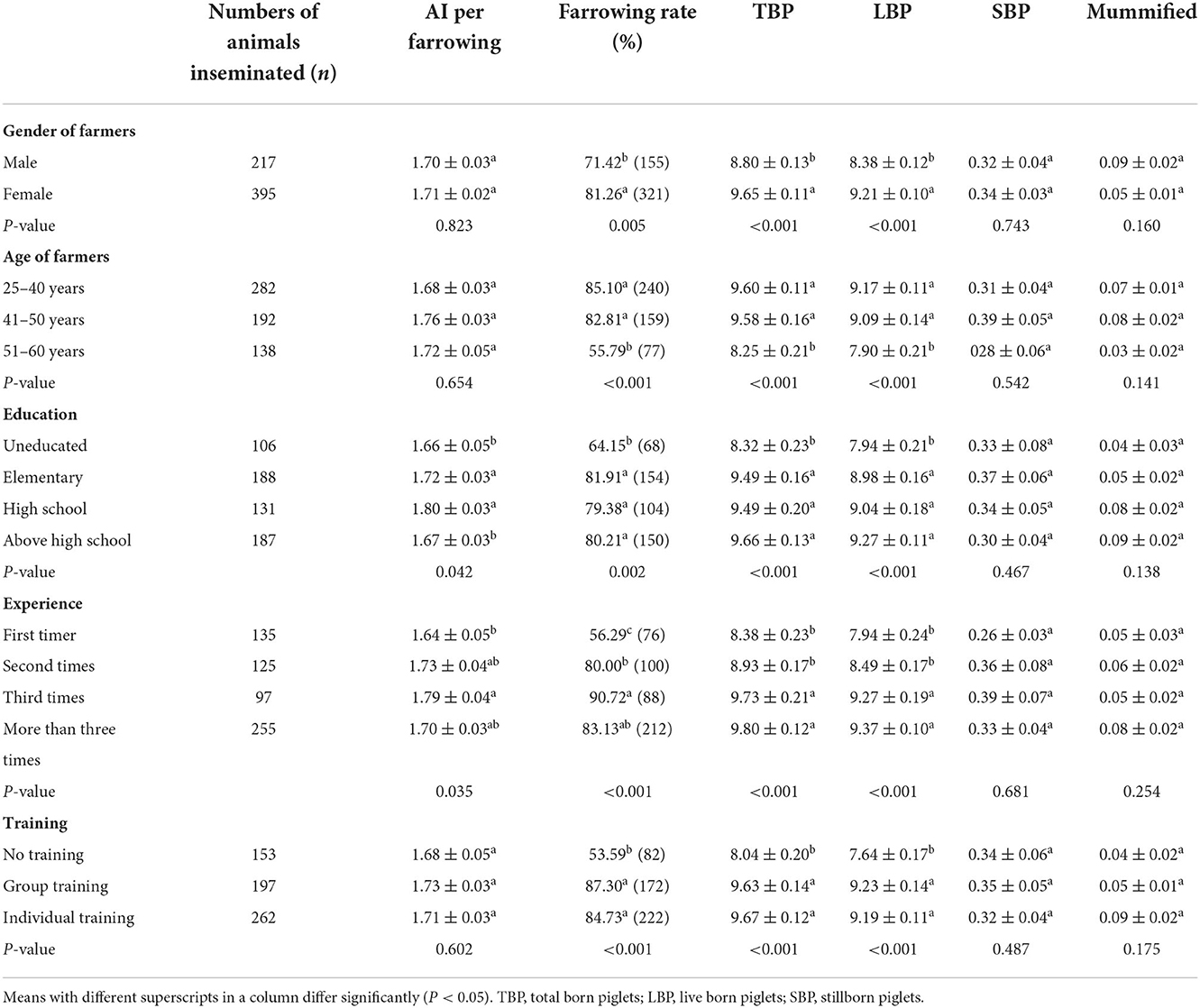
Table 4. Factors affecting the success of AI in smallholder pig production system in Indian Himalaya.
Effect of semen storage duration and distance of AI center on reproductive performance of pigs in smallholder pig production system
The effect of semen storage time and distance of AI center on the reproductive performance of sows after AI are presented in Table 5. Semen storage beyond 48 h significantly reduced (P < 0.001; r = –0.16) the farrowing rate (67.51 vs. 85.65%), TBP (8.97 vs. 9.57) (P = 0.041), and LBP (8.57 vs. 9.14) (P = 0.038) compared to other two groups. The farrowing rate was significantly (P < 0.001; r = –0.19) lower in sows that were located more than 30 km away from the semen center (66.66 vs. 82.90%).
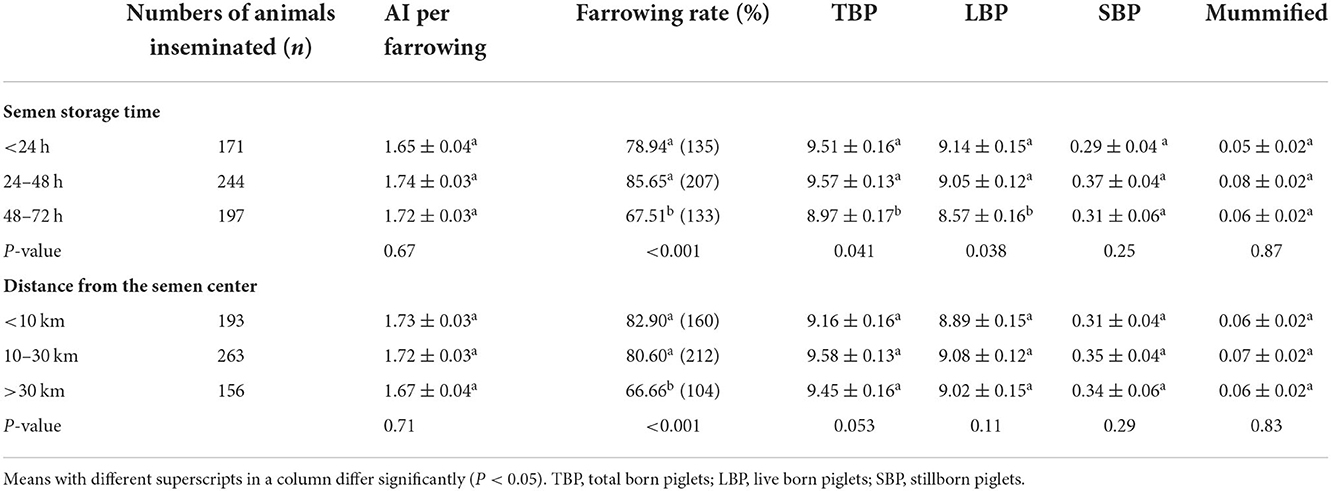
Table 5. Effect of semen storage time and distance of AI center on reproductive performance (mean ± SEM) of sows in smallholder pig production system.
Comparison of cost-benefit analysis of natural breeding vs. artificial insemination of pigs in smallholder pig production system
A cost-benefit analysis of natural breeding vs. AI is presented in Table 6. The total breeding cost was significantly (P < 0.001) lower in artificially inseminated sows (US$5.64 vs. US$37.64). Net return per sow was significantly (P < 0.001) higher in artificially inseminated sows (US$464.8 vs. US$248.11). AI resulted in an 87.33% increase in net returns per farrowing.
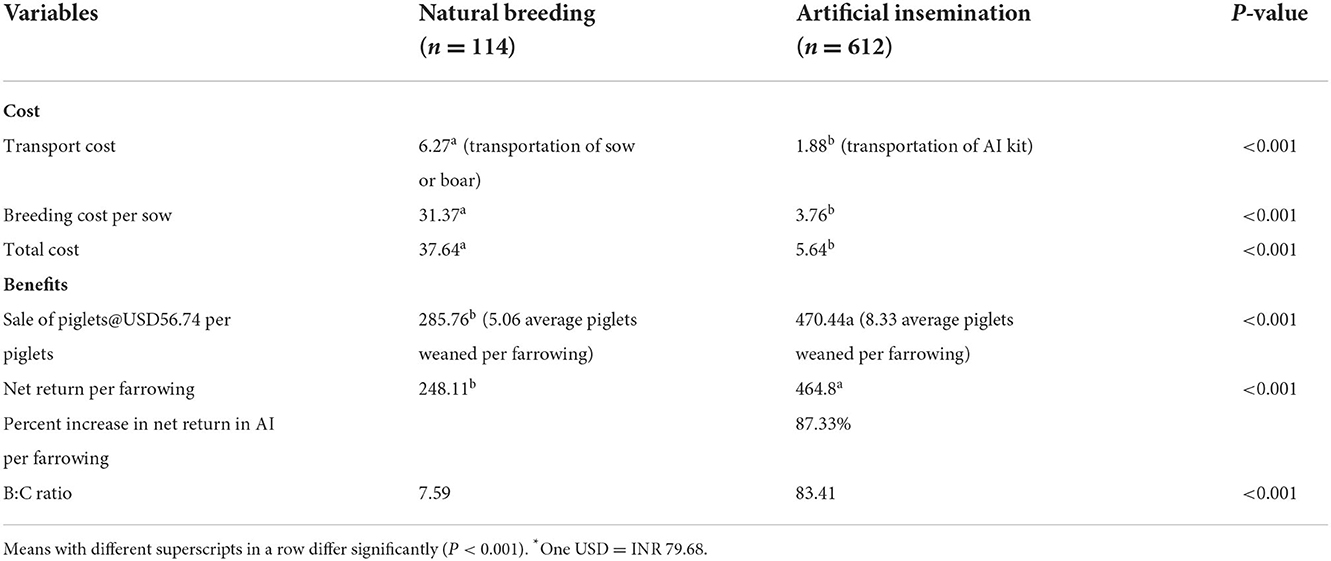
Table 6. Cost-benefit analysis of natural breeding vs. artificial insemination per farrowing in smallholder pig production system (value in USD*).
Discussion
In the study region, the pig population in each household varied from 2 to 8 in number which is in agreement with previous studies (Kadirvel et al., 2013; Mbuza et al., 2016). The smallholder pig production system is constrained by economic resources and, therefore, has few pigs. The present study showed that the productivity and profitability of the smallholder pig production system increased significantly after the adoption of AI, as measured by more weaned piglets and higher net returns. In this study, the reproductive efficiency in terms of farrowing rate, TBP, and LBP was much better in artificially inseminated sows as compared to naturally bred sows. Similarly, the number of breeding per farrowing was less in AI-bred sows. This is consistent with previous studies (Am-in et al., 2010; Visalvethaya et al., 2011); however, another study (Kadirvel et al., 2013) found no difference in farrowing rates between AI and naturally bred sows. The improved reproductive efficiency in AI-bred sows may be attributed to the selection of superior boars and the laboratory examination of the semen quality (Visalvethaya et al., 2011). The health status (Hodel et al., 2021) and frequency of use of rental boars may compromise semen quality, which would potentially reduce their reproductive efficiency (Am-in et al., 2010). It was previously reported that farmers uses the same boar for breeding purpose in a village for three to four years over few breedable sows (Kadirvel et al., 2013; Singh and Mollier, 2020). This leads to inbreeding which results in low productivity and reproductive efficiency. It was earlier reported that an increase in pig inbreeding is greater in populations with smaller effective population sizes (Lopes et al., 2019). Our previous studies on organized farms have reported similar reproductive performance in pigs bred by AI in subtropical climates (Singh et al., 2020b, 2021a, 2022).
In the present study, AI by research associates and farmers yielded similar farrowing rates, however, TBP and LBP were higher in sows inseminated by research associates. This is because research associates are veterinarians, exposed to technology, and better trained than farmers. The management of AI is very important to determine the success of the procedure and the reproductive performance of the sows (Maes et al., 2011). Visalvethaya et al. (2011) reported no difference between AI done by technicians and farmers. This might be due to differences in the skill levels of farmers. Visalvethaya et al. (2011) selected the trained farmers only, whereas, in the present study, farmers were randomly selected regardless of their previous exposure to AI technology.
It was noted that female inseminators were much more successful in AI compared to male inseminators in terms of farrowing rate, TBP, and LBP. This is in contrast to previous reports (Visalvethaya et al., 2011; Mbuza et al., 2016; Celestin et al., 2019), reporting better performance by male inseminators. In the study area, women mainly look after livestock and pig farming (Singh et al., 2020b). It has been previously reported that technology adoption depends primarily on access to resources and information rather than gender (Doss and Morris, 2001). In addition, age, education, experience, and training of farmers affected the performance of AI in this study. In terms of experience, the performance of first-timer and second-timer inseminators was lower as compared to the third-timers and beyond. It was previously reported that farmers with higher education and more experience in AI tended to perform more efficiently (Visalvethaya et al., 2011; Celestin et al., 2019). Young and educated farmers are eager to learn new farming technologies and are much more receptive to the technologies. Training the farmers individually or in groups increased the success of AI. Farmer's inexperience can lead to improper storage, transportation, thawing, and insemination of semen. In the AI of pigs, heat detection and correct AI procedure are the critical steps for a successful outcome (Singh and Mollier, 2020). Visalvethaya et al. (2011) observed that farmers with no training experience observed more backflow of semen during AI processes which affected the success of AI. Training and experience tend to improve correct insemination timing and AI procedure. Sharma et al. (2020) documented that a lack of training and exposure to AI technology are the major impediments to the successful adoption of AI in pigs.
In the present study, boar semen stored beyond 48 h negatively affected the reproductive efficiency of AI. It is well known that boar sperms are prone to oxidative stress during liquid storage because of their unique membrane composition (Aitken and Drevet, 2020; Singh et al., 2021a). Singh et al. (2021a, 2022) reported that a high THI index in the subtropical region negatively affected the boar semen quality which was subsequently reflected in the poor reproductive efficiency of AI. Haugana et al. (2005) reported that increasing the semen storage time in the BTS extender from 4–14 to 52–62 h reduced piglets' litter size by 0.5. The reduced success of AI with aged semen may be because of decreased sperm motility and livability which reduced their fertility. Contrary to our findings, Visalvethaya et al. (2011) did not find any difference in reproductive performance because of semen storage time and methods of semen transportation. The difference could be because of breed, extender, and training exposure to the inseminators. Furthermore, the farmers located within 30 km of the semen center reported better success with AI as compared to those located more than 30 km away. Similar to our findings, Celestin et al. (2019) reported that the success of AI in pigs decreased with an increase in the distance between the semen center and the pig farm. This is possible that with an increase in the distance between the farm and the semen center, semen transportation and semen storage conditions will affect the outcome of AI. However, Am-in et al. (2010) revealed that distance to the AI center did not affect the farrowing rate and non-return to oestrus. The difference could be due to breed, semen extender, semen storage condition, trained inseminator, or climate.
In terms of profitability and income enhancement, the net return per farrowing was much higher in artificially inseminated sows. By adopting AI, farmers saved the expenditure involved in the maintenance of breeding boar. Kadirvel et al. (2013) also reported higher profitability by doing AI in backyard pig production systems. In addition to the direct increase in profitability, AI leads to access to the best genetics, increased genetic gain, improved reproductive efficiency, and enhanced boar use efficiency (Knox, 2016; Niyiragira et al., 2018; Singh and Mollier, 2020). Increased pig productivity can indirectly impact the food and nutrition security of smallholder pig producers by increasing food spending, income diversification, and ecological resilience.
Conclusion
The findings of the present study have important policy implications for the promotion of AI in the smallholder pig production system in the Indian Himalayan region. This study has demonstrated that AI improved the productivity and profitability of this food production system. There was a marked increase in profitability with the adoption of AI in this production system. In the long-term, this intervention may improve ecological resilience as a result of decreased dependence on wildlife and natural resources in this fragile ecosystem. The success of this model will help the resource-poor farmers to increase their nutritional and economic security on a sustainable basis. In nutshell, AI in smallholder pig production systems is recommended to enhance the profitability and food security of resource-poor farmers.
Data availability statement
The original contributions presented in the study are included in the article/supplementary material, further inquiries can be directed to the corresponding author.
Ethics statement
The animal study was reviewed and approved by Institute Animal Ethics Committee of ICAR Research Complex for NEH Region, Umiam, Meghalaya, India. Written informed consent was obtained from the owners for the participation of their animals in this study.
Author contributions
MS and RM: conceptualization, investigation, methodology, and data. RP and NP: investigation and data. RY and JC: data and writing—review and editing. MS, RK, and SB: writing—original draft, review, and editing. DR and VM: supervision and resources. All authors have read and approved the final manuscript.
Funding
The present study was funded by the Indian Council of Agricultural Research-Mega Seed Project on Pig (OXX01916), ICAR Research Complex for NEH Region, Nagaland Center, Jharnapani, Medziphema, 797106, Nagaland, India.
Conflict of interest
The authors declare that the research was conducted in the absence of any commercial or financial relationships that could be construed as a potential conflict of interest.
Publisher's note
All claims expressed in this article are solely those of the authors and do not necessarily represent those of their affiliated organizations, or those of the publisher, the editors and the reviewers. Any product that may be evaluated in this article, or claim that may be made by its manufacturer, is not guaranteed or endorsed by the publisher.
References
Aitken, R. J., and Drevet, J. R. (2020). The importance of oxidative stress in determining the functionality of mammalian spermatozoa: a two-edged sword. Antioxidants 9, 111. doi: 10.3390/antiox9020111
Am-in, N., Tantasuparuk, W., and Techakumphu, M. (2010). Comparison of artificial insemination with natural mating on smallholder farms in Thailand, and the effects of boar stimulation and distance of semen delivery on sow reproductive performance. Trop. Anim. Health Prod. 42, 921–924. doi: 10.1007/s11250-009-9508-3
Celestin, M., Valentine, N., Isaac, M., Fabrice, M., Oscar, N., François, B., et al. (2019). Factors influencing success of artificial insemination of pigs using extended fresh semen in rural smallholder pig farms of Rwanda. Int. J. Livestock Prod. 10, 101–109. doi: 10.5897/IJLP2018.0562
Doss, C. R., and Morris, M. L. (2001). How does gender affect the adoption of agricultural innovations? The case of improved maize technology in Ghana. Agric. Econ. 25, 27–39. doi: 10.1016/S0169-5150(00)00096-7
Haugana, T., Reksen, O., Grohn, Y. T., Gaustad, A. H., and Hofmo, P. O. A. (2005). retrospective study on effects of storage time of liquid boar semen on reproductive performance in Norwegian swine. Theriogenology 64, 891–901. doi: 10.1016/j.theriogenology.2004.12.013
Hodel, C., Nathues, H., and Grahofer, A. (2021). Effect of housing conditions, management procedures and traits of the external male reproductive tract on the sexual behaviour of natural mating boars. Theriogenology 167, 44–50. doi: 10.1016/j.theriogenology.2021.03.003
Kadirvel, G., Kumaresan, A., Das, A., Bujarbaruah, K. M., Venkatasubramanian, V., Ngachan, S. V., et al. (2013). Artificial insemination of pigs reared under smallholder production system in northeastern India: success rate, genetic improvement, and monetary benefit. Trop. Anim. Health Prod. 45, 679–686. doi: 10.1007/s11250-012-0277-z
Knox, R. V. (2016). Artificial insemination in pigs today. Theriogenology 85, 83–93. doi: 10.1016/j.theriogenology.2015.07.009
Lopes, J. S., Rorato, P. R. N., Mello, F. C. B., de Freitas, M. S., Prestes, A. M., Garcia, D. A., et al. (2019). Strategies to control inbreeding in a pig breeding program: a simulation study. Anim. Prod. 49, 994. doi: 10.1590/0103-8478cr20180994
Maes, D., Lopez, R. A., Rijsselaere, T., Vyt, P., and Van, S. A. (2011). Artificial Insemination in Pigs, Artificial Insemination in Farm Animals, ed M. Manafi (New York, NY: InTech). Available online at: http://www.intechopen.com/books/artificial-insemination-in-farmanimals/artificialinsemination-in-pigs (accessed September 20, 2022).
Mbuza, F., Majyambere, D., Ayabagabao, J. D., and Dutuze, M. F. (2016). Inventory of pig production systems in Rwanda. Int. J. Livestock Prod. 7, 41–47. doi: 10.5897/IJLP2016.0299
Molotsi, A. H., Cupido, M., and Hoffman, L. C. H. (2021). Characterization of smallholder pig production systems in the Western Cape, South Africa. Trop. Anim. Health Prod. 53, 325. doi: 10.1007/s11250-021-02649-8
Niyiragira, V., Rugira, K. D., and Hirwa, C. D. (2018). Success drivers of pig artificial insemination based on imported fresh semen. Int. J. Livestock Prod. 9, 102–107. doi: 10.5897/IJLP2018.0467
Park, H. S., Min, B., and Oh, S. H. (2017). Research trends in outdoor pig production: a review. Asian-Aust. J. Anim. Sci. 30, 1207–1214. doi: 10.5713/ajas.17.0330
Sharma, P. R., Singh, M., Kumar, P., Mollier, R. T., and Rajkhowa, D. J. (2020). Factors for adoption of artificial insemination technology in pig: evidence from small-scale pig production system. Trop. Anim. Health Prod. 52, 3545–3553. doi: 10.1007/s11250-020-02391-7
Singh, M., and Mollier, R. T. (2016). “Pig production scenario in Nagaland: current status and future prospective,” in Souvenir of Stakeholder Meet on Agriculture Development and Agromet Advisory Services in Nagaland Organized by ICAR Research Complex for NEH Region (Medziphema: Nagaland Centre), 86–95.
Singh, M., and Mollier, R. T. (2020). Artificial insemination in pig, its status and future perspective in India: a review. Indian J. Anim. Sci. 90, 1207–1212. doi: 10.56093/ijans.v90i9.109324
Singh, M., Mollier, R. T., Pongener, N., Bordoloi, L. J., Kumar, R., Choudhary, J. K., et al. (2022). Linseed oil in boar's diet during high temperature humidity index (THI) period improves sperm quality characteristics, antioxidant status and fatty acid composition of sperm under hot humid sub-tropical climate. Theriogenology (2022) 189: 127–136. doi: 10.1016/j.theriogenology.2022.06.012
Singh, M., Mollier, R. T., Sharma, P. R., Baishya, S. K., Sangtam, M., and Rajkhowa, D. J. (2020a). Growth and reproductive performance of Rani breed of pig in various agro-climatic condition of Nagaland. Indian J. Anim. Sci. 90, 1644–1648. doi: 10.56093/ijans.v90i12.113204
Singh, M., Mollier, R. T., Sharma, P. R., and Chaudhary, J. K. (2020b). Reproductive performance in cervical and postcervical artificial insemination (PCAI) with liquid boar semen in Gunghroo X Hampshire crossbreed pig in Nagaland. Indian J. Anim. Sci. 90, 708–711.
Singh, M., Mollier, R. T., Sharma, P. R., Kadirvel, G., Doley, S., Sanjukta, R. K., et al. (2021a). Dietary flaxseed oil improve boar semen quality, antioxidant status and in-vivo fertility in humid sub-tropical region of North East India. Theriogenology 159, 123–131. doi: 10.1016/j.theriogenology.2020.10.023
Singh, M., Nungshitula, P., Mollier, R. T., Kadirvel, G., Bhattacharjee, M., Rajkhowa, D. J., et al. (2021b). Balance sheet of pork production and consumption in Nagaland: implications for strengthening of pork value chain. Indian J. Anim. Sci. 91, 313–317. doi: 10.56093/ijans.v91i4.114340
Singh, M., Sharma, P. R., Mollier, R. T., Ngullie, E., Baisyha, S. K., Rajkhowa, D. J., et al. (2019). Tribal farmers' traditional knowledge and practices of pig farming in Nagaland. Indian J. Anim. Sci. 89, 329–333.
Keywords: sustainability, small-holder pig farms, artificial insemination (AI), economics, Indian Himalayan region
Citation: Singh M, Mollier RT, Pongener N, Patton RN, Yadav R, Chaudhary JK, Katiyar R, Babu S, Rajkhowa DJ and Mishra VK (2022) Effect of artificial insemination in comparison to natural mating on the reproductive performance and profitability of smallholder pig production system in Indian Himalaya. Front. Sustain. Food Syst. 6:1067878. doi: 10.3389/fsufs.2022.1067878
Received: 12 October 2022; Accepted: 11 November 2022;
Published: 08 December 2022.
Edited by:
Gopal Shukla, Uttar Banga Krishi Viswavidyalaya, IndiaReviewed by:
Alexander Grahofer, University of Bern, SwitzerlandCarlos Piñeiro, PigCHAMP Pro Europa SL, Spain
Copyright © 2022 Singh, Mollier, Pongener, Patton, Yadav, Chaudhary, Katiyar, Babu, Rajkhowa and Mishra. This is an open-access article distributed under the terms of the Creative Commons Attribution License (CC BY). The use, distribution or reproduction in other forums is permitted, provided the original author(s) and the copyright owner(s) are credited and that the original publication in this journal is cited, in accordance with accepted academic practice. No use, distribution or reproduction is permitted which does not comply with these terms.
*Correspondence: Mahak Singh, c21pbGV5bWFoYWtAZ21haWwuY29t
 Mahak Singh
Mahak Singh R. Talimoa Mollier
R. Talimoa Mollier Nungshitula Pongener1
Nungshitula Pongener1 Rahul Katiyar
Rahul Katiyar Subhash Babu
Subhash Babu